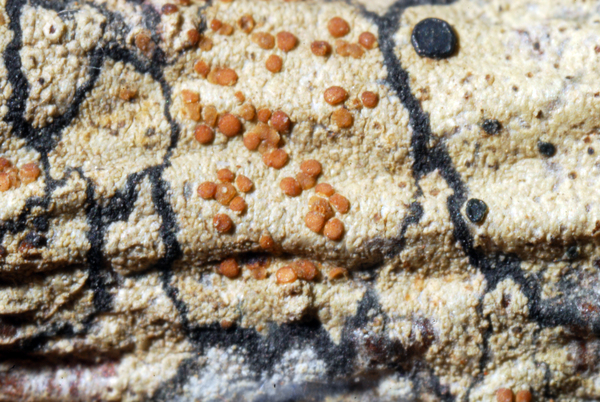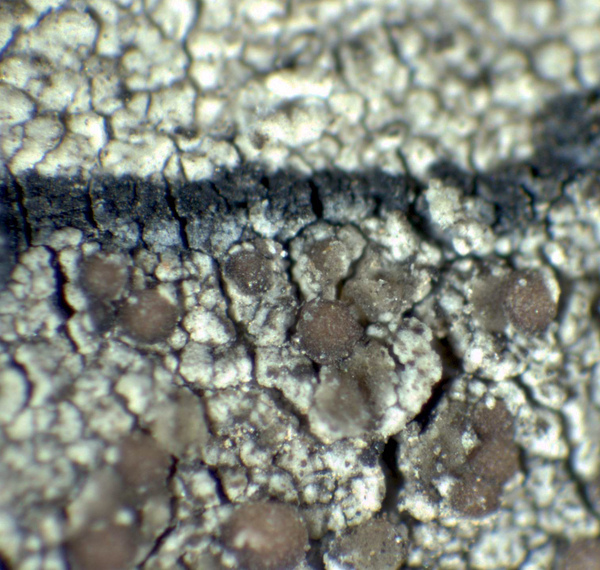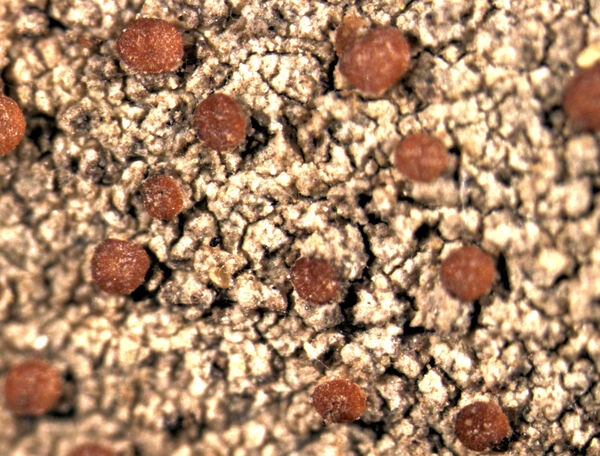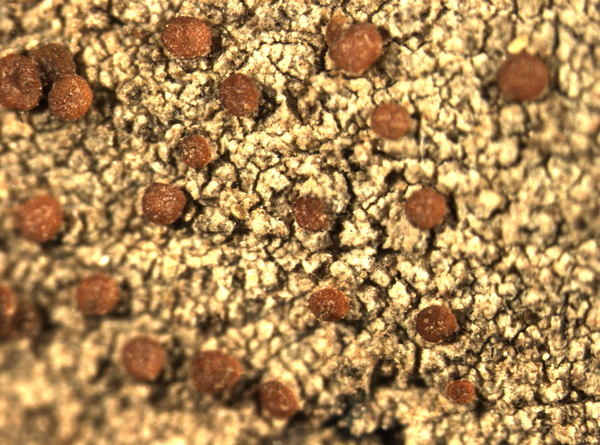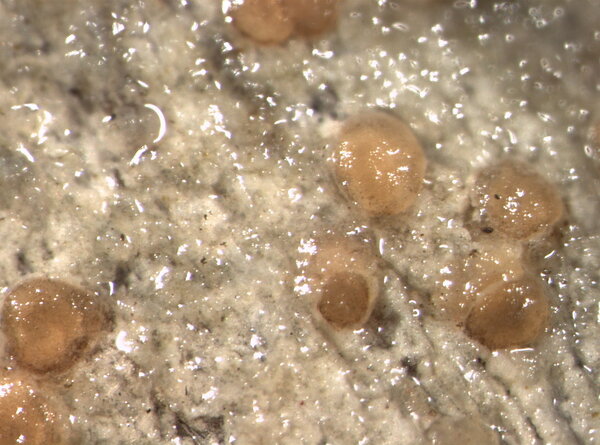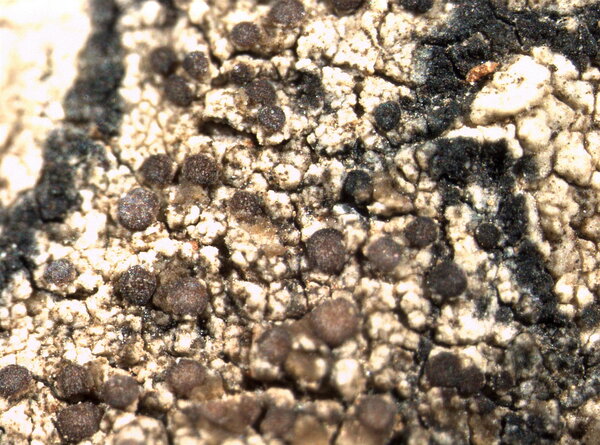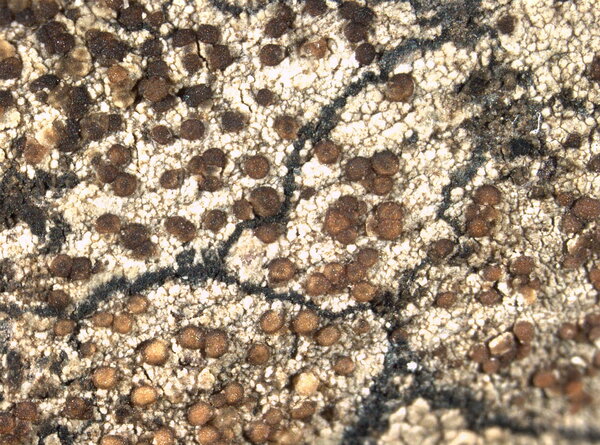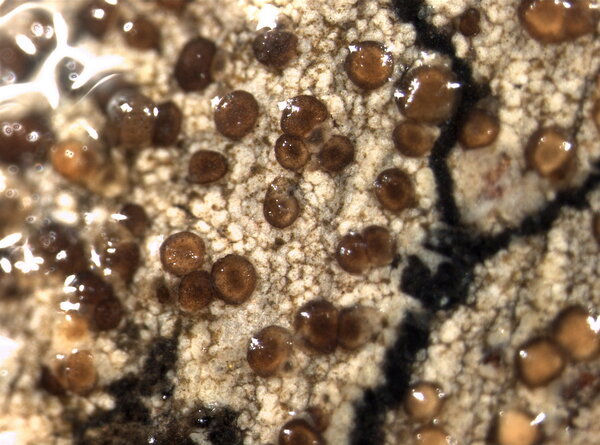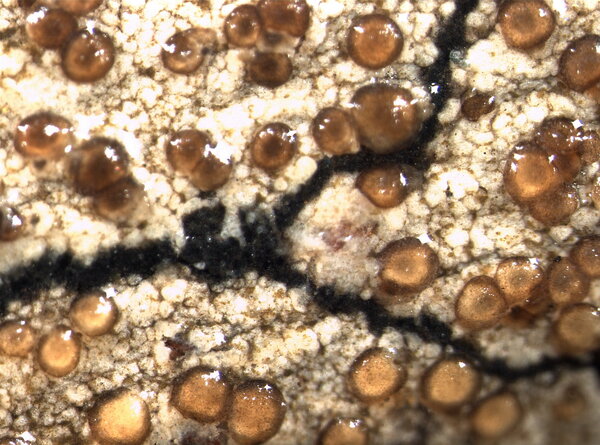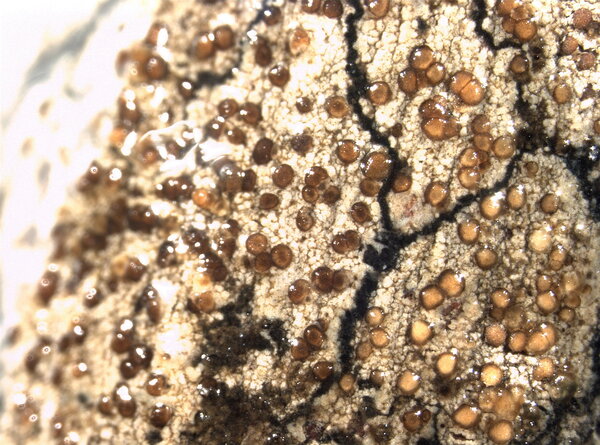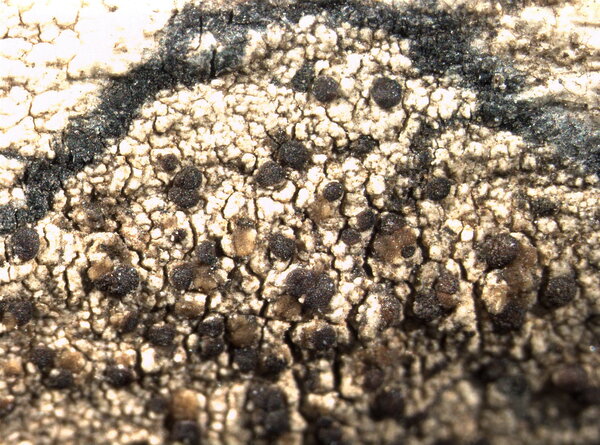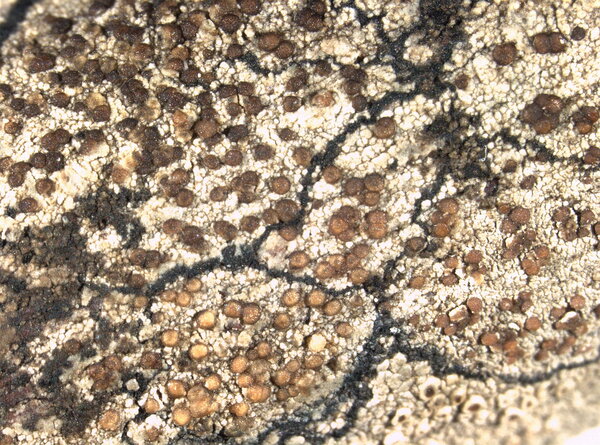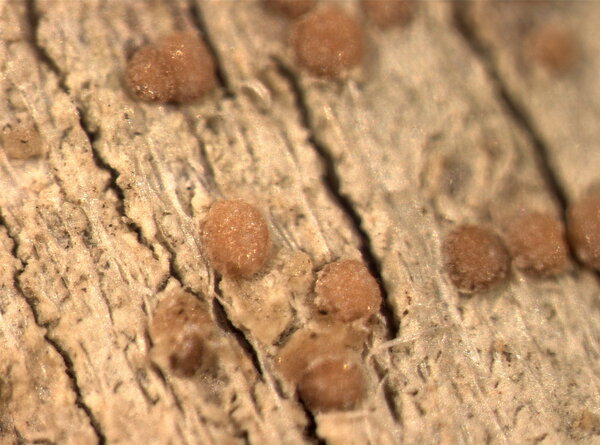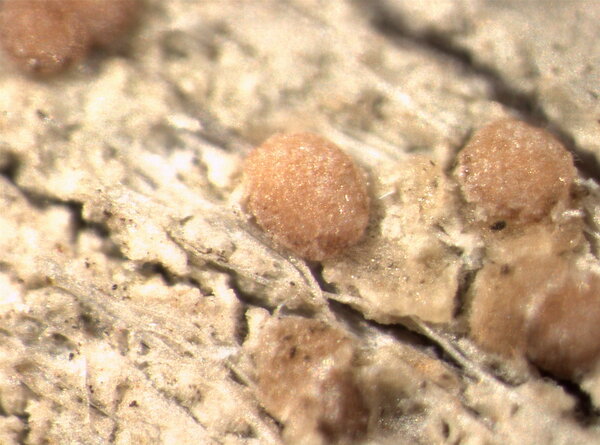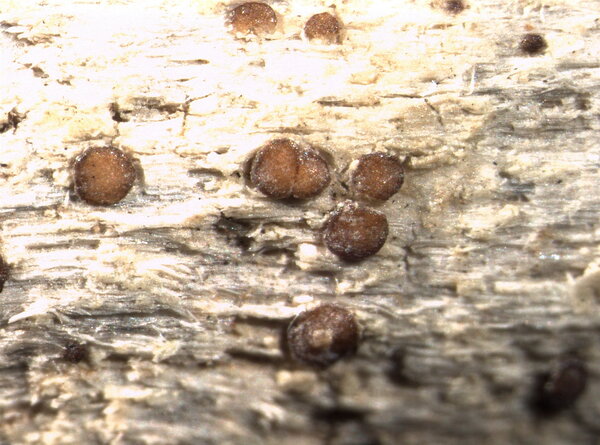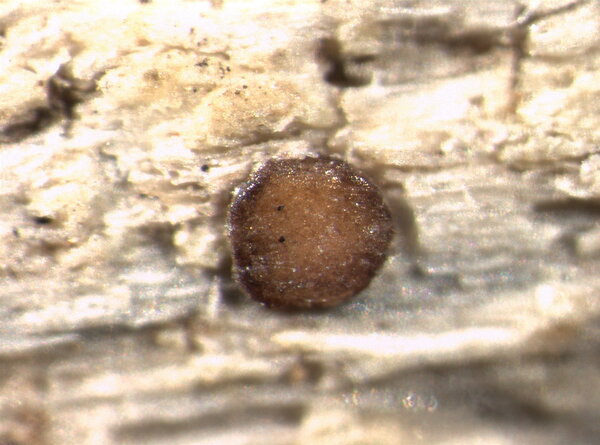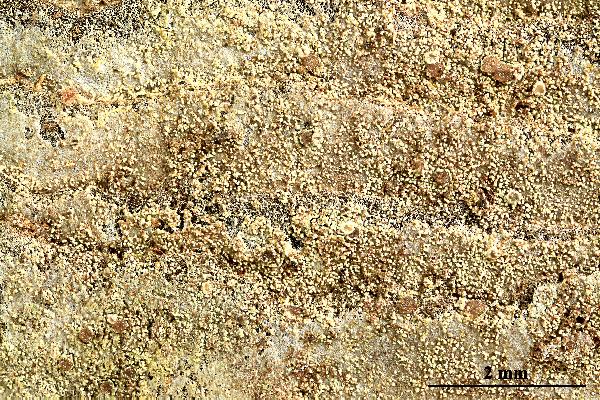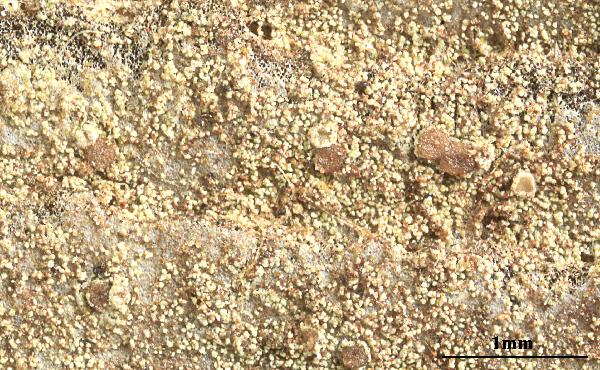Xanthosyne varians subsp. exigua (Chaub.) Brodo, López de Silanes, Lendemer, R.C. Harris & McMullin
in Brodo & al., Bryologist, 127, 2: 202, 2024). Basionym: Lecidea exigua Chaub. - in Saint-Amans, Fl. Agen.: 478, 1821.
Synonyms: Biatora decandollei Hepp; Biatora exigua (Chaub.) Fr.; Biatora geographica A. Massal.; Lecidea decandollei (Hepp) Jatta; Traponora varians (Ach.) J. Kalb & Kalb
Distribution: N - VG (TSB 21635), Ven (Lazzarin 2000b, Nascimbene & Marini 2010), Lomb, Piem (Matteucci & al. 2013), Lig. C - Tosc, Laz (Ravera 2001, 2006c), Abr. S - Camp (Ricciardi & al. 2000, Nimis & Tretiach 2004), Pugl (Nimis & Tretiach 1999).
Description: Thallus crustose, thinly episubstratic, whitish, pale yellow or greenish grey, smooth to areolate or finely verrucose, delimited by a dark prothallus. Apothecia lecideine, rounded to deformed by mutual compression, 0.15-0.5 mm across, isolated or aggregated into small clusters, orange-brown, pale yellowish brown or reddish brown, sometimes pruinose when young and blackening when old, with a flat to slightly convex disc and a thin, finally excluded proper margin. Proper exciple two-parted, the inner part and the outer rim consisting of non-gelatinized, prosoplectenchymous hyphae, the lower outer portion of consisting of gelatinized, anticlinally arranged, branched hyphae, usually pale brown, lacking green pigments, ochre to reddish brown at the outer edge, colourless to pale yellow within, 15-30 µm wide laterally, expanding to 50(-65) µm towards the base; epithecium pale yellow-red-brown, with many crystals dissolving in K, 5-10 µm high; hymenium colourless, 40-70 µm high, I+ blue; paraphyses coherent in water, easily made free in K, simple or sparingly branched and anastomosing in upper part, 0.7-1.2 µm thick at mid-level, the apical cells capitate, up to 4.5 µm wide; hypothecium colourless. Asci 8-spored, narrowly clavate, thick-walled, with an I+ blue tholus containing a lighter blue, broadly rounded axial body, Lecidella-type. Ascospores 1-celled, hyaline, ellipsoid, (7-)8-11(-15) x (3-)4-6(-7) µm. Photobiont chlorococcoid. Spot tests: thallus K+ yellow, C- or C+ weakly orange-yellow, KC+ pale orange, P-, UV-. Chemistry: atranorin, thiophanic acid, confusa-unknown, arthothelin.Note: a mild-temperate to Mediterranean lichen found in very open woodlands, on smooth bark, especially on branches of deciduous trees; records from Southern Italy are the first from Italy in the XX century. For further details see Brodo & al. (2024). It is included in the Italian red list of epiphytic lichens as “Vulnerable” (Nascimbene & al. 2013c).
Growth form: Crustose
Substrata: bark
Photobiont: green algae other than Trentepohlia
Reproductive strategy: mainly sexual
Most common in areas with a humid-warm climate (e.g. most of Tyrrenian Italy)
Commonnes-rarity: (info)
Alpine belt: absent
Subalpine belt: absent
Oromediterranean belt: absent
Montane belt: absent
Submediterranean belt: extremely rare
Padanian area: absent
Humid submediterranean belt: very rare
Humid mediterranean belt: extremely rare
Dry mediterranean belt: absent

Predictive model
Herbarium samples
Growth form: Crustose
Substrata: bark
Photobiont: green algae other than Trentepohlia
Reproductive strategy: mainly sexual
Most common in areas with a humid-warm climate (e.g. most of Tyrrenian Italy)
Commonnes-rarity: (info)
Alpine belt: absent
Subalpine belt: absent
Oromediterranean belt: absent
Montane belt: absent
Submediterranean belt: extremely rare
Padanian area: absent
Humid submediterranean belt: very rare
Humid mediterranean belt: extremely rare
Dry mediterranean belt: absent

Predictive model
| Herbarium samples |
 DOLICHENS
DOLICHENS
